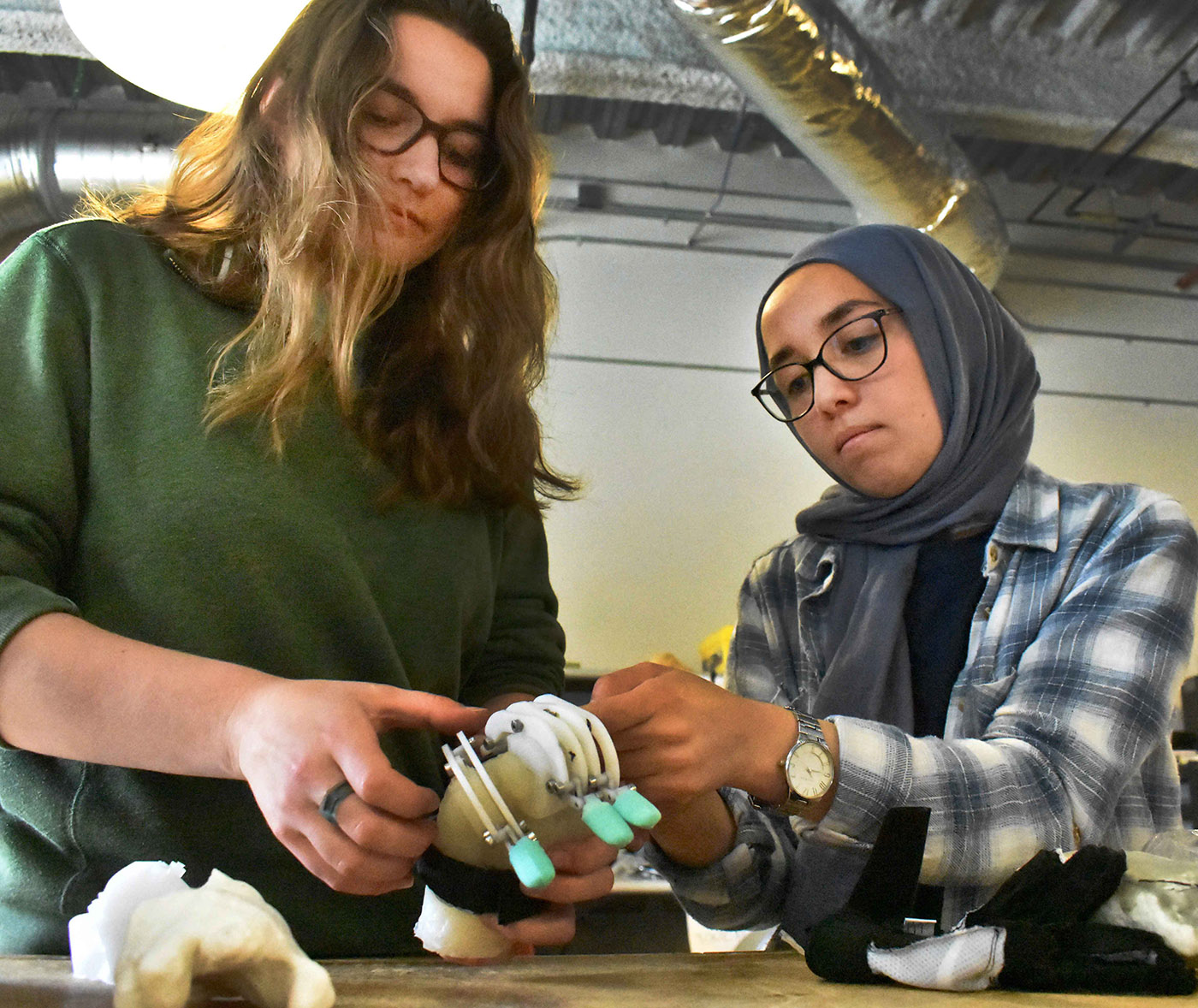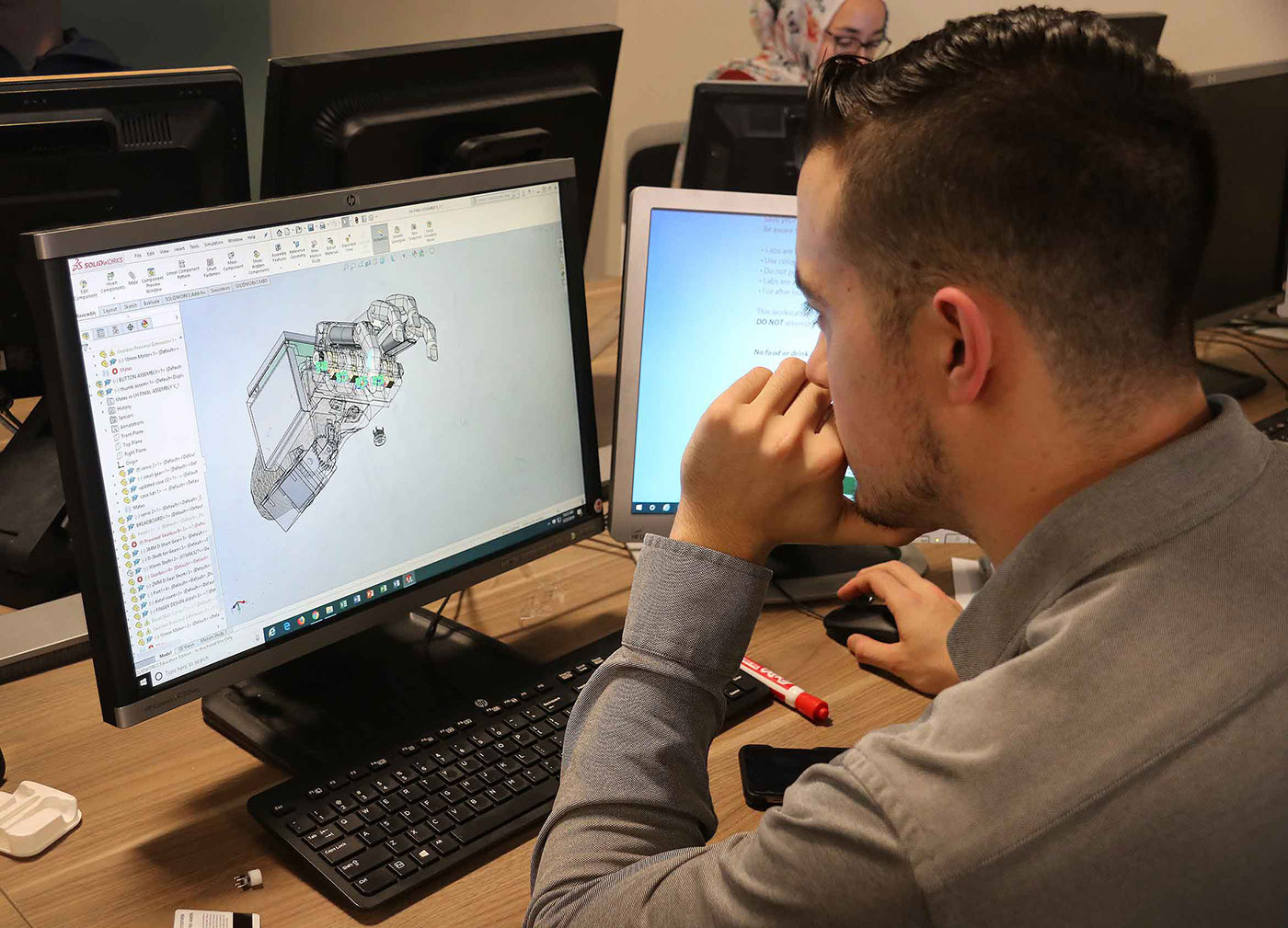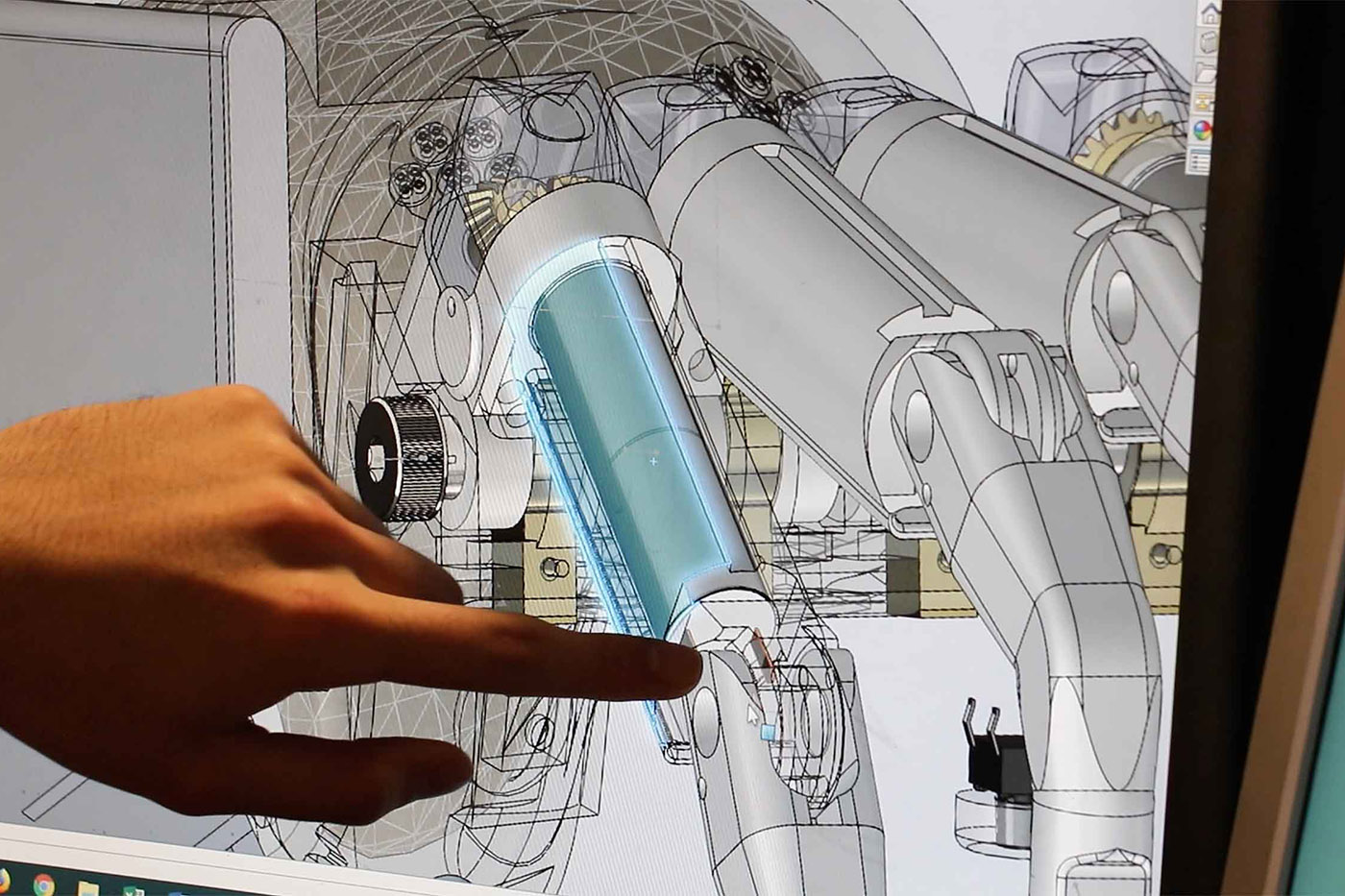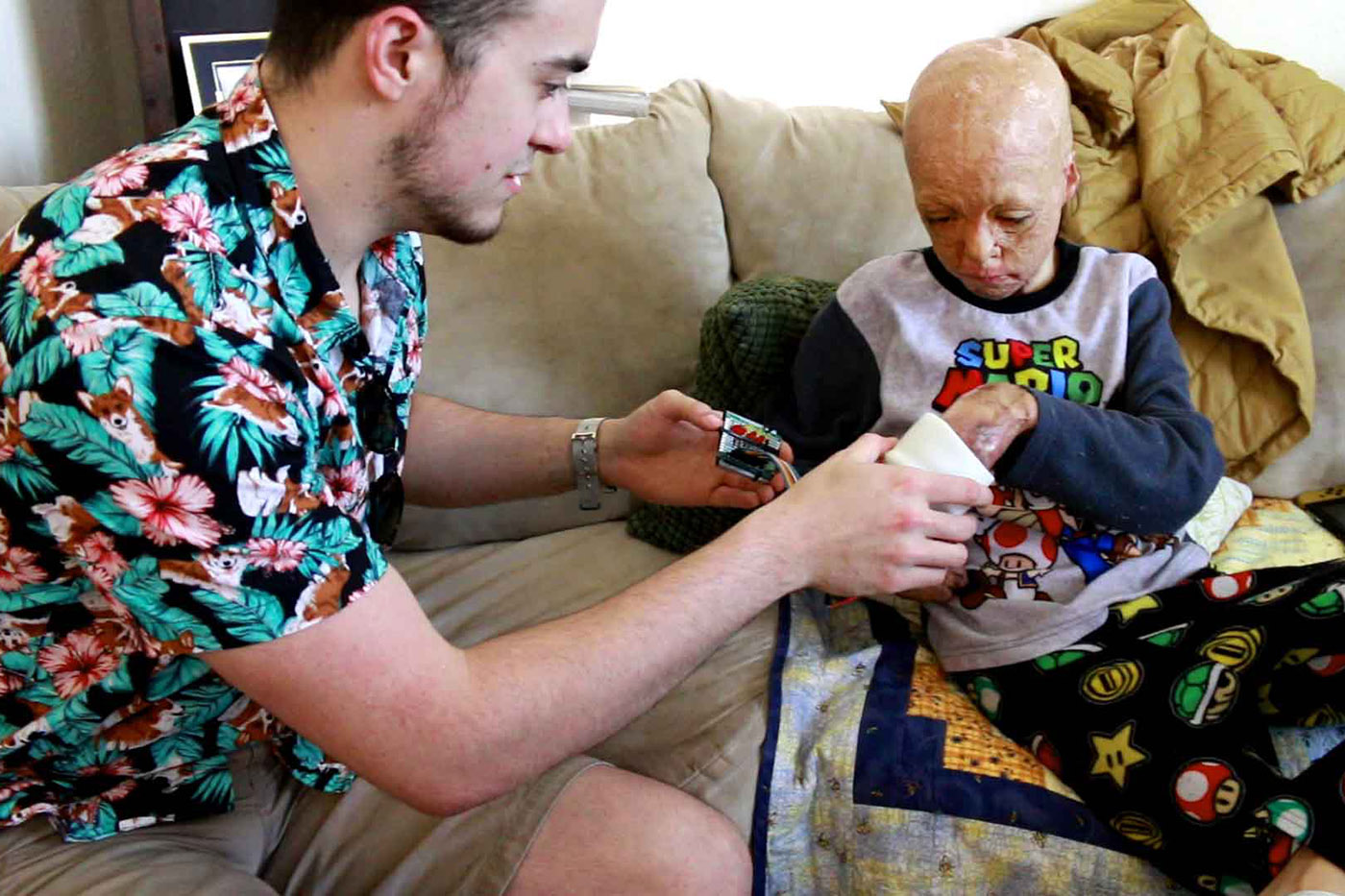In April 2018, 10-year-old Julian Reynoso and his family were hit by a suspected drunk driver in Los Angeles. The family’s minivan caught fire and only Julian and his mother Elizabeth Flores survived. Reynoso’s father Juan, younger sister Emma and younger brother Sebastian did not survive the accident.
Reynoso was left with 85 percent of his body burned and had only one functioning finger, along with parts of the nine other fingers.
Cal Poly engineering students will present Reynoso with two custom prosthetic hands on June 8 at the Advanced Technologies Lab (ATL) from 6 p.m. to 9 p.m.
“I wanted to provide a restoring force for him,” mechanical engineering senior Ryan Kissinger said. “That kind of atrocity, those kinds of things that happened to him, it just means something. I think as human beings, showing compassion to other people is what really is most essential and most important. It’s at the root of everything that we do as engineers. It’s to provide for people, to provide for people’s ability to live.”
Kissinger heard about Reynoso’s story through the Quality of Life Plus (QL+) club at Cal Poly and was chosen to be the Hands for Julian team lead. From there, Kissinger selected eight team members out of 70 applicants.

The team worked on both a right and left hand for Reynoso for about six months, so he could have the ability to play with legos once again, Kissinger said.
With Reynoso’s severe injuries from the accident, the Hands for Julian team faced many challenges. Reynoso’s scar tissue, changing hand size and distant location forced the team to reevaluate molds and designs for the two hands after working from 30-80 hours per week on the project.
“This is engineering with a purpose,” mechanical engineering junior and co-team lead Austin Conrad said. “Though there is a lot to it — there’s a lot of heartache, there’s a lot of energy and time spent doing this and pushing through design failure after design failure to get to something that works, the most meaningful part, the part that keeps you putting all those hours in, is Julian at the end.”
Since the accident was so recent and so severe, emotions also factor into the project.
“The emotional factor makes it difficult,” Conrad said. “Elizabeth lost her husband and two of her babies, and the last remaining one… is now learning how to try to exist in the world that isn’t designed for someone at that level of disability.”
Kissinger, Conrad and the rest of the team have been working for months on constructing two hands that are each designed differently based on Reynoso’s ability for his existing left and right hand.

Reynoso’s left hand injuries are more severe than the right, therefore requiring a completely different design. The right prosthetic hand, Kissinger said, has no motors or electronics and is just mechanical. The team originally spent hours on a complex design for the right hand, then realized the need for a simpler design, sort of “like a baseball glove with finger attachments,” Kissinger said. The left prosthetic hand is robotic, designed with Swiss motors, and is overall a mechatronic left hand, Kissinger said.
The two prosthetic hands are designed to last about two years, both Kissinger and Conrad said, so the team is manufacturing parts of the prosthetics out of metal and robust materials that will last for the two-year plan. The team left a bit of clearance in the socket of the prosthetic so that as Reynoso’s hands grow, he can get new molds but still use the same socket, made of safe materials for his hands.
Biomedical engineering professor and QL+ Lab Director Lily Hsu Laiho said the team of student engineers worked completely independently on this project and put in countless hours of work without earning class credit or compensation. The students did not learn how to do any of this in classes, Laiho said, so the students did their own research and built everything from scratch.
“They get the opportunity to apply their engineering skills to improve the quality of life for someone, and I think specifically for this one, they can see in Julian’s case the direct impact,” Laiho said.
The students’ work will not only enable Reynoso to do more everyday tasks but will also hopefully show Reynoso that students who did not even know him cared about him and about improving his life, Laiho said.

Conrad said the team is assembling a user manual of videos and photos along with a toolbox to help Reynoso and his mother use, maintain and repair the two prosthetic hands as needed. If there are issues beyond the scope of the user manual and toolbox, Conrad said the QL+ Lab staff will be sent down as needed to help Reynoso and follow up with him post-project.
After the two years are up, the Hands for Julian team will have the process laid out for future QL+ Lab teams so they can progress Reynoso’s prosthetics to something more updated for what he needs at the time, after his hands have hopefully stabilized and improved, according to Conrad.
Tickets to see Reynoso receive his new prosthetic hands from the team of engineers on June 8 at the ATL on campus are available for $15. The ticket revenue will go back to the QL+ Lab, Kissinger said.
The team said they look forward to the smile on Reynoso’s face when they present him with his custom prosthetic hands. Conrad said he is also looking forward to the smile and big hug from Reynoso’s mother.

